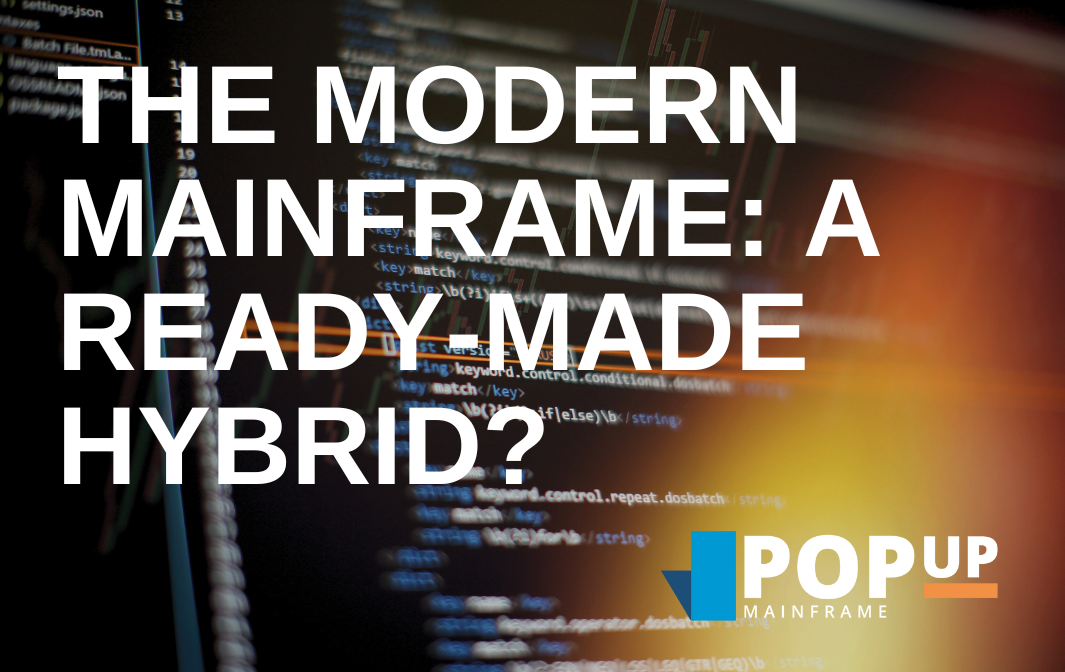The popularity of the Linux platform continues to rise—but does that apply equally to mainframe users? This blog examines the growing hybrid trend in a mainframe context.
Wait – Linux on a Mainframe?
Absolutely! Since its inception a generation ago, Linux on IBM Mainframes–such as IBM Z and LinuxONE–has gained significant traction, particularly in enterprise environments.
 By 2006, Linux on IBM Z had already been embraced by over 1,700 customers. Its promise to combine the flexibility of Linux with the reliability and scalability of IBM’s mainframe systems, met with wide acclaim, and organizations adopted it to support a variety of use-cases, including modern applications, cloud computing, databases, and containerized workloads, benefiting from features like advanced data security, high performance, and sustainability.
By 2006, Linux on IBM Z had already been embraced by over 1,700 customers. Its promise to combine the flexibility of Linux with the reliability and scalability of IBM’s mainframe systems, met with wide acclaim, and organizations adopted it to support a variety of use-cases, including modern applications, cloud computing, databases, and containerized workloads, benefiting from features like advanced data security, high performance, and sustainability.
For example, the LinuxONE Emperor 4, is popular among financial services organizations such as Citibank, according to sources.
Facilitating Innovation
More recently, IBM introduced the Integrated Facility for Linux (IFL), a specialized processor designed specifically to run Linux workloads on IBM Z and LinuxONE systems. The IFL provides high server density, reduced operational costs, and
enhanced performance capabilities, such as Simultaneous Multi-Threading (SMT) and Single Instruction Multiple Data (SIMD) technologies.
Additionally, IFLs can be added dynamically to systems and support various capacity-on-demand options. That flexibility means organizations use Integrated Facilities for Linux (IFLs) in a cloud computing context to achieve scalability, security, and efficiency. Beyond cloud computing, IFLs are also leveraged – including to house additional development and testing environments: there’s understandable merit in using a flexible, robust and secure environment to simulate critical workloads, to accelerate delivery while keeping vital z/OS cycles devoted to production.
From an IT sustainability perspective, there are genuine green credentials associated with the platform. According to IBM, running Linux workloads on an IBM z16 single frame or rack mount – instead of on comparable x86 servers in similar conditions – can reduce energy consumption by 75% and space by 67%. Who knew blue was so green?
Measuring Success
In 2020, IBM reported “Linux capacity increasing 55 percent year-over-year,” cementing the strategic nature of its investment commitment.
Industry analyst, Brent Ellis, of Forrester, more recently explained, “[IBM] has a strategy to enable more modern workloads to run on the hardware and the number of people acquiring mainframe hardware to run on Linux is increasing. Over the next few years, it is likely there will be more capability … coming to [mainframe] Linux to ensure a steady and non-disruptive transition to modern environments within the mainframe.”
Further quantifying that trend, however, is harder than you might expect. While there is plenty of information about the mainframe market – in the form of reports and surveys – details surrounding mainframe Linux are only lightly pencilled in. How Linux supports a modern mainframe-centric strategy is not well-defined, despite the uniformly accepted wisdom of its huge potential.
To learn more, PopUp Mainframe included a couple of questions about attitudes towards mainframe usage—and specifically Linux environments—as part of the market survey we commissioned this year with research experts Vanson Bourne. We wanted to hear how Linux matters to mainframe decision-makers.
The survey is still ongoing, so we’re not going to share the numbers yet. But early indications are worth mentioning. Firstly—no great surprise for a mainframe market survey, perhaps—we see an overwhelming loyalty to the mainframe platform, both today and into the foreseeable future.
What’s perhaps more illuminating, however, is that the initial findings suggest a huge appetite – an overwhelming majority of respondents (we will give you the precise number when the survey is closed) – for using Linux-based mainframe environments in their various forms. Simply put, many who hold the mainframe in high regard see the potential and value of Linux as part of that equation.
Make the Most of your Modern Mainframe
Of course, potential is one thing and practical solutions are quite another. Our study therefore also digs into the bottlenecks facing mainframe teams today, and where they most want to improve their capabilities to support the business.
We look forward to being able to report the full results in the coming weeks – revealing key findings, spotlighting challenges, and offering practical steps towards an even more efficient mainframe environment.
Check back soon for the results of our survey, and if you would like to learn more about our plans to run PopUp Mainframe on a mainframe IFL, please get in touch.

